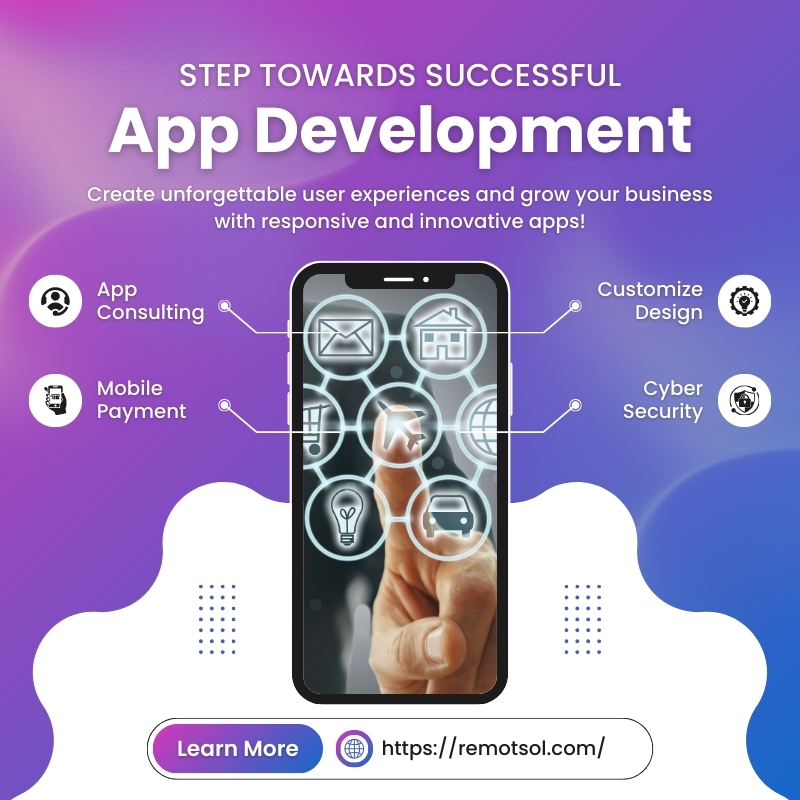
Choosing the right tech stack is one of the most critical decisions in mobile app development. The tools, frameworks, and programming languages you choose will directly impact your app’s performance, scalability, and maintenance. With the fast-paced evolution of technology, staying updated with the best mobile development tech stacks is crucial for building a future-proof application.
In this guide, we’ll explore the key factors to consider and the best tech stacks for iOS, Android, and cross-platform development in 2025.
- Understanding the Tech Stack Components
A tech stack consists of four major components:
- Frontend (Client-Side) – The user interface (UI) and interactions.
- Backend (Server-Side) – Manages business logic, databases, and APIs.
- Database – Stores user and app data securely.
- Development Tools & Frameworks – Help with coding, testing, and deployment.
Your goal is to select the best combination based on your project’s needs.
2. Key Factors to Consider Before Choosing a Tech Stack
Before selecting a tech stack, evaluate these key factors:
a. Type of App You’re Building
- Native App – Built specifically for iOS or Android for maximum performance.
- Cross-Platform App – Single codebase for multiple platforms (cost-effective).
- Progressive Web App (PWA) – Works like a mobile app but runs in a browser.
b. Performance Requirements
If your app requires high-speed performance (e.g., gaming, AR/VR apps), native development (Swift/Kotlin) is the best choice. For general applications, cross-platform frameworks like Flutter or React Native work well.
c. Scalability & Future Growth
Choose a tech stack that can handle increasing users and data without major rework. Cloud-based solutions like Firebase, AWS, or Supabase help with scalability.
d. Time & Budget Constraints
- If you need a faster launch, choose cross-platform development (Flutter, React Native).
- If you have a large budget, go for native development for better performance.
e. Security Considerations
Banking, healthcare, or enterprise apps require strong encryption, secure APIs, and authentication protocols. Look for built-in security features in your chosen tech stack.
3. Best Tech Stacks for Mobile App Development in 2025
Now, let’s explore the best tech stacks for different types of mobile applications.
A. Native Development Tech Stack (Best for Performance & Customization)
If you need high performance, deep OS integration, and full hardware access, native development is the best choice.
For iOS Apps
✅ Programming Language: Swift
✅ Framework: SwiftUI, UIKit
✅ Database: CoreData, SQLite, Firebase
✅ Backend: Node.js, Python (Django), Firebase, AWS
For Android Apps
✅ Programming Language: Kotlin
✅ Framework: Jetpack Compose, Android SDK
✅ Database: Room, SQLite, Firebase
✅ Backend: Node.js, Spring Boot, Firebase, AWS
When to choose native development?
- If you need the best performance and security.
- If your app requires complex animations, AR/VR, or IoT integration.
- If you want to fully leverage platform-specific capabilities.
B. Cross-Platform Tech Stack (Best for Cost & Development Speed)
Cross-platform development allows you to write one codebase for both iOS and Android, reducing costs and time.
Best Cross-Platform Frameworks in 2025
✅ Flutter (Google) – Fast, flexible, great UI (Dart language).
✅ React Native (Meta) – Popular, large community, reusable components.
✅ Kotlin Multiplatform (JetBrains) – Native-like experience, growing adoption.
Recommended Backend & Database for Cross-Platform Apps
✅ Backend: Firebase, Node.js, Python (FastAPI), Supabase
✅ Database: Firestore, PostgreSQL, MongoDB
When to choose cross-platform development?
- If you want to build an app quickly with a limited budget.
- If your app does not require complex OS-specific features.
- If you need a single team to develop for both platforms.
C. Progressive Web Apps (PWAs) Tech Stack (Best for Web-Like Mobile Experience)
PWAs offer fast loading speeds, offline capabilities, and app-like experiences but don’t require app store downloads.
Best Tech Stack for PWAs
✅ Frontend: React.js, Vue.js, Angular
✅ Backend: Node.js, Firebase, Django
✅ Database: IndexedDB, SQLite, Firebase Firestore
When to choose a PWA?
- If your goal is fast accessibility without downloads.
- If you want an SEO-friendly solution for mobile and desktop.
- If you don’t need push notifications or native hardware access.
4. Backend Technologies for Mobile Apps in 2025
Regardless of the frontend tech stack, you’ll need a solid backend for app logic, authentication, and data management.
Top Backend Frameworks:
✅ Node.js (Fast & Scalable, JavaScript-based)
✅ Django (Python-based, Secure & AI-friendly)
✅ Spring Boot (Enterprise-level, Java-based)
✅ Firebase (Serverless, Best for Startups & MVPs)
Database Recommendations:
✅ Firestore / Firebase (NoSQL, Cloud-based, Great for Real-Time Apps)
✅ PostgreSQL (Relational, High Performance, Open-Source)
✅ MongoDB (Flexible, NoSQL, Scalable)
Choosing the right backend depends on:
- The complexity of your app (e.g., real-time chat, AI-powered apps).
- Your need for scalability and server maintenance control.
- Your preference for SQL (structured) vs. NoSQL (flexible) databases.
5. Final Thoughts: Making the Right Choice
When selecting a tech stack for mobile app development in 2025, focus on:
✅ Your app type (Native, Cross-Platform, or PWA)
✅ Performance needs (speed, animations, real-time updates)
✅ Development time & cost constraints
✅ Scalability for future growth
✅ Security & compliance requirements
Recommended Approach:
✔ If performance is your priority → Go Native (Swift/Kotlin).
✔ If you want fast development → Choose Flutter or React Native.
✔ If you want a lightweight web-based app → Go PWA (React, Vue).
By making an informed tech stack decision, you’ll create an app that is efficient, scalable, and future-ready for 2025 and beyond.
For more Visit our Social Profiles Facebook , Instagram , LinkedIn , youtube and pinterest.

